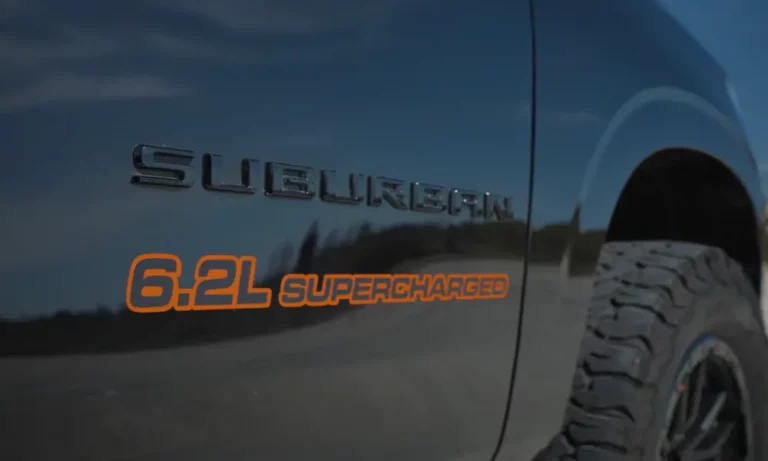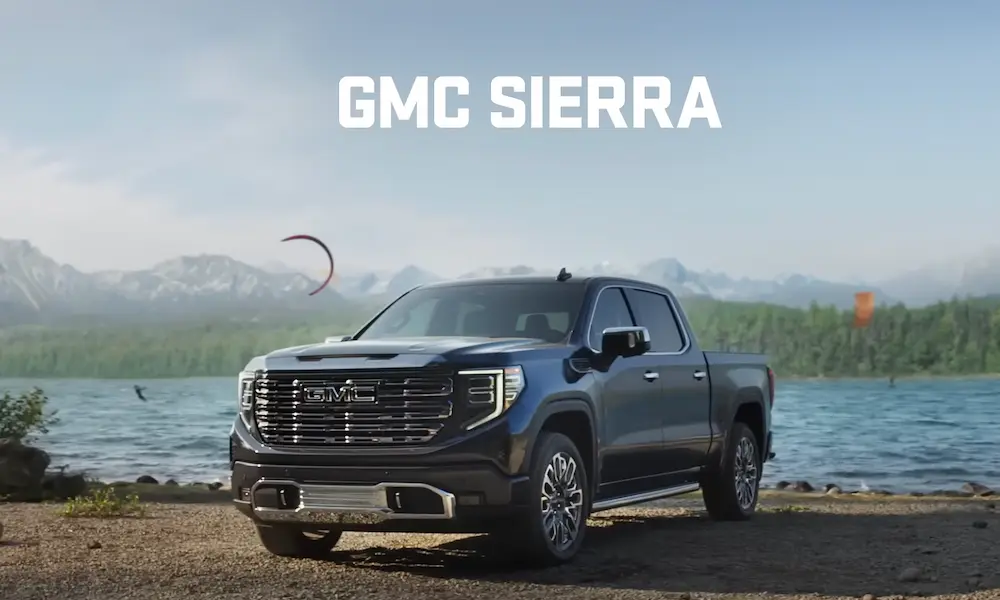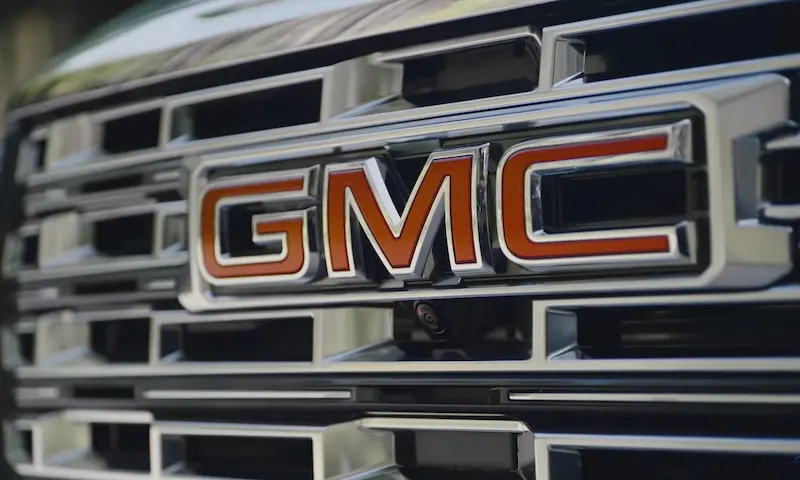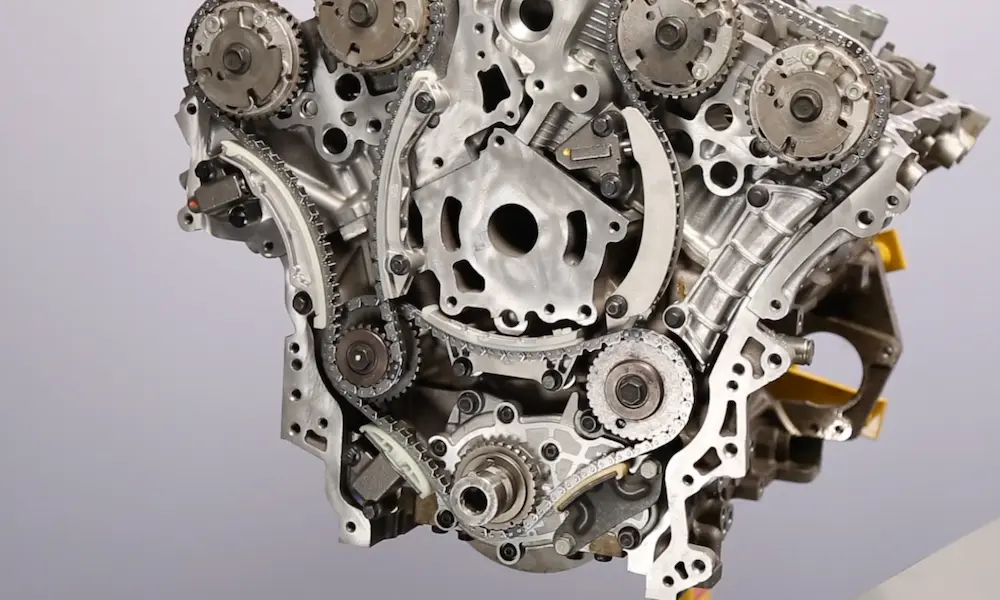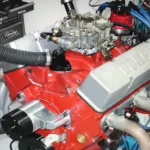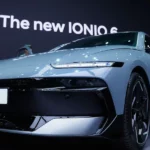Looking for the complete rundown on the L87 engine specs? Whether you’re planning an upgrade, comparing truck options, or just satisfying your automotive curiosity, this beast of an engine deserves a closer look. GM’s 6.2L powerhouse is packed with tech that balances raw power with surprising efficiency.
What Exactly Is the L87 Engine?
The L87 is GM’s 6.2-liter V8 engine that first roared to life in 2019, replacing the previous L86 model. It’s part of GM’s EcoTec3 family and represents the evolution of their legendary small block architecture.
This naturally-aspirated engine features an overhead valve (OHV) “push-rod” design in a 90-degree V configuration. Don’t let the traditional architecture fool you – this engine packs modern tech beneath its valve covers.
L87 Engine Specs: The Numbers That Matter
Let’s cut to the chase with the core specifications that make the L87 stand out:
| Specification | Details |
|---|---|
| Displacement | 6,162 cc / 376 cu. in. |
| Bore x Stroke | 103.25 mm x 92.0 mm |
| Compression Ratio | 11.5:1 |
| Horsepower | 420 hp (313 kW) @ 5,600 rpm |
| Torque | 460 lb-ft (624 Nm) @ 4,100 rpm |
| Max Engine Speed | 6,000 rpm |
| Weight (Dry) | 424 lbs |
| Firing Order | 1-8-7-2-6-5-4-3 |
| Construction | All-aluminum block and heads |
Those numbers translate to real-world power that you’ll feel every time you press the accelerator. The all-aluminum construction also helps keep weight down while maintaining the durability you need.
L87 vs. Previous GM V8 Engines
The L87 isn’t just another V8 in GM’s lineup – it brings significant improvements over its predecessors. Here’s how it compares:
L87 vs. L86
The most notable difference is the implementation of Dynamic Fuel Management (DFM) in the L87, replacing the Active Fuel Management (AFM) system found in the L86. While AFM simply switched between 8-cylinder and 4-cylinder modes, DFM offers 17 different cylinder activation patterns, constantly evaluating and adjusting for optimal performance and fuel economy every 125 milliseconds.
Both engines share the same displacement and basic architecture, but the L87’s more sophisticated cylinder deactivation technology gives it an efficiency edge.
L87 vs. 5.3L L83/L84
Compared to GM’s smaller 5.3L engines, the L87 offers:
- Nearly 65 more horsepower
- About 77 more lb-ft of torque
- Larger bore diameter (103.25mm vs. 96.01mm)
- Similar technology suite
The substantial power increase makes the L87 the go-to choice for those who need maximum towing capacity or acceleration.
Three Game-Changing Technologies in the L87
The L87 stands out from conventional V8 engines through three key technologies that boost both performance and efficiency:
1. Dynamic Fuel Management (DFM)
The crown jewel of the L87 is its sophisticated Dynamic Fuel Management system. Unlike older systems that could only switch between running on all or half the cylinders, DFM can:
- Operate in 17 different cylinder patterns
- Analyze driving conditions 80 times per second
- Seamlessly activate or deactivate individual cylinders
- Maximize fuel efficiency without sacrificing power
This technology allows the engine to use exactly the number of cylinders needed for the current driving conditions – whether that’s one cylinder for light cruising or all eight for maximum towing power.
2. Direct Fuel Injection
The L87 employs direct injection technology, spraying fuel directly into the combustion chamber rather than the intake ports. This precision approach:
- Improves combustion efficiency
- Enables more precise fuel delivery
- Keeps the engine running cooler
- Enhances cold-start capability
The high-pressure fuel pump is mounted in the valley between cylinder heads and includes “soft stop” control for the internal solenoid, minimizing the characteristic ticking noise that plagues many direct injection systems.
3. Variable Valve Timing
While sticking with a traditional pushrod design, the L87 incorporates a dual-equal camshaft phasing system that:
- Adjusts timing for both intake and exhaust valves simultaneously
- Optimizes performance across the entire RPM range
- Improves both low-end torque and high-end power
- Helps reduce emissions
This technology gives you the responsiveness you want at any engine speed while maintaining the packaging advantages of a pushrod design.
The L87 Engine’s Construction: Built to Last
The L87’s robust construction incorporates several notable features designed for strength and longevity:
Block and Heads
Both the block and heads are made from aluminum, reducing weight while maintaining rigidity. The deep-skirt block design provides additional support for the crankshaft, while the heads feature rectangular intake ports for optimal airflow.
Rotating Assembly Components
Inside the engine, you’ll find:
- Cast aluminum domed pistons specifically designed for direct injection
- A forged steel crankshaft for maximum durability
- I-beam powder-metal connecting rods (6.098 inches long)
This combination delivers both strength and responsiveness throughout the RPM range.
Advanced Cooling and Lubrication
Several specialized systems work together to keep the L87 running cool:
- Two-stage oil pump that adjusts oil pressure based on operating conditions
- Oil-jet piston cooling system that sprays oil underneath each piston
- Wet-sump lubrication system with 8-quart capacity
These features help the L87 maintain optimal operating temperature even under demanding conditions like towing or off-roading.
Which Vehicles Feature the L87 Engine?
The L87 6.2L V8 powers GM’s lineup of full-size trucks and SUVs, including:
- Chevrolet Silverado 1500 (high-end trims)
- Chevrolet Suburban
- Chevrolet Tahoe
- GMC Sierra 1500 (high-end trims)
- GMC Yukon
- GMC Yukon XL
- Cadillac Escalade
Some vehicles offer a Performance Upgrade package that adds a cat-back exhaust system and unique air filter, boosting output to 435 horsepower and 469 lb-ft of torque.
The engine has also found its way into marine applications through Kodiak Marine Engines, where it maintains the same impressive power ratings.
Fuel Requirements: What Does the L87 Need?
Good news for your wallet – the L87 is designed to run on regular 87 octane gasoline, though premium fuel is recommended for marine applications. The engine is also flex-fuel capable and can operate on ethanol blends up to E85.
This flexibility gives you options at the pump while maintaining optimal performance regardless of your fuel choice.
Performance Modifications: Unleashing More Power
If the standard 420 horsepower isn’t enough for you, the aftermarket has responded with numerous options to increase the L87’s output:
Supercharger Kits
Whipple Superchargers offers kits specifically for the L87 that can boost power output to over 600 horsepower. These bolt-on kits maintain factory reliability while dramatically increasing performance.
Exhaust Upgrades
While GM offers a factory performance exhaust option, aftermarket systems from companies like Borla and Corsa can free up additional power while giving your truck or SUV a more aggressive sound.
Tuning Options
Custom ECU tuning can optimize the L87’s performance by adjusting fuel mapping, timing, and disabling cylinder deactivation for maximum power.
Common Questions About the L87 Engine
How reliable is the L87 engine?
The L87 builds on GM’s proven small block architecture, and early reports indicate excellent reliability. The all-aluminum construction has proven durable, and the engine incorporates several features specifically designed for longevity.
What’s the fuel economy of vehicles with the L87?
Fuel economy varies by vehicle, but expect around 15-16 MPG city and 20-22 MPG highway in full-size trucks and slightly lower numbers in larger SUVs. The Dynamic Fuel Management system helps maximize efficiency without sacrificing power.
Can the L87 be used as a crate engine?
Yes! GM offers the L87 as a crate engine for custom builds and retrofits. This gives enthusiasts access to modern V8 performance for hot rods, resto-mods, and other projects.
How does the L87 compare to Ford and Ram V8s?
The L87 matches up favorably against competitors like Ford’s 5.0L Coyote and Ram’s 5.7L Hemi. It generally offers more torque than the Ford and more sophisticated cylinder deactivation than either competitor, though each engine has its strengths.
Real-World Performance: What Owners Are Saying
Owners consistently praise the L87 for its:
- Smooth power delivery
- Impressive towing capability
- Surprising fuel economy during highway cruising
- Responsive acceleration at any speed
- Subtle transition between cylinder activation modes
The engine has earned a reputation for delivering the power you need when you need it while remaining civilized during everyday driving.
The L87 Evolution: Looking Forward
GM continues to refine the L87, with slight tweaks to calibration and components each model year. While the fundamental architecture remains unchanged, software updates have improved the seamlessness of the Dynamic Fuel Management system.
As emissions regulations tighten, GM’s ability to extract maximum efficiency from this V8 through advanced technologies will become increasingly important. For now, the L87 represents an impressive balance of traditional V8 characteristics and modern engineering.
Maintenance Tips for the L87 Engine
To keep your L87 running at its best:
- Stick to the manufacturer’s recommended oil change interval (typically every 7,500 miles)
- Use the specified 0W-20 synthetic oil
- Keep an eye on spark plug condition, as direct injection can sometimes lead to carbon buildup
- Use quality fuel from reputable stations
- Consider occasional high-RPM driving to help clear carbon deposits
Following these simple practices will help ensure your L87 delivers years of trouble-free service.
Recognition: Industry Accolades
The 6.2-liter L87 earned recognition as one of WardsAuto’s 10 Best Engines in 2019, the year it was introduced. This prestigious award highlights the engine’s successful combination of power, efficiency, and advanced technology.
The Perfect Blend of Tradition and Technology
The GM 6.2L V8 L87 engine represents a significant achievement in modern engine design. It successfully balances high power output with improved efficiency through its advanced technologies while maintaining the traditional benefits of GM’s small block architecture – compact packaging, low center of gravity, and excellent torque characteristics.
Whether you’re hauling a trailer, cruising the highway, or accelerating onto the freeway, the L87 delivers the performance you need with surprising efficiency. It’s a powertrain that proves V8 engines can still thrive in an increasingly efficiency-focused automotive landscape.

